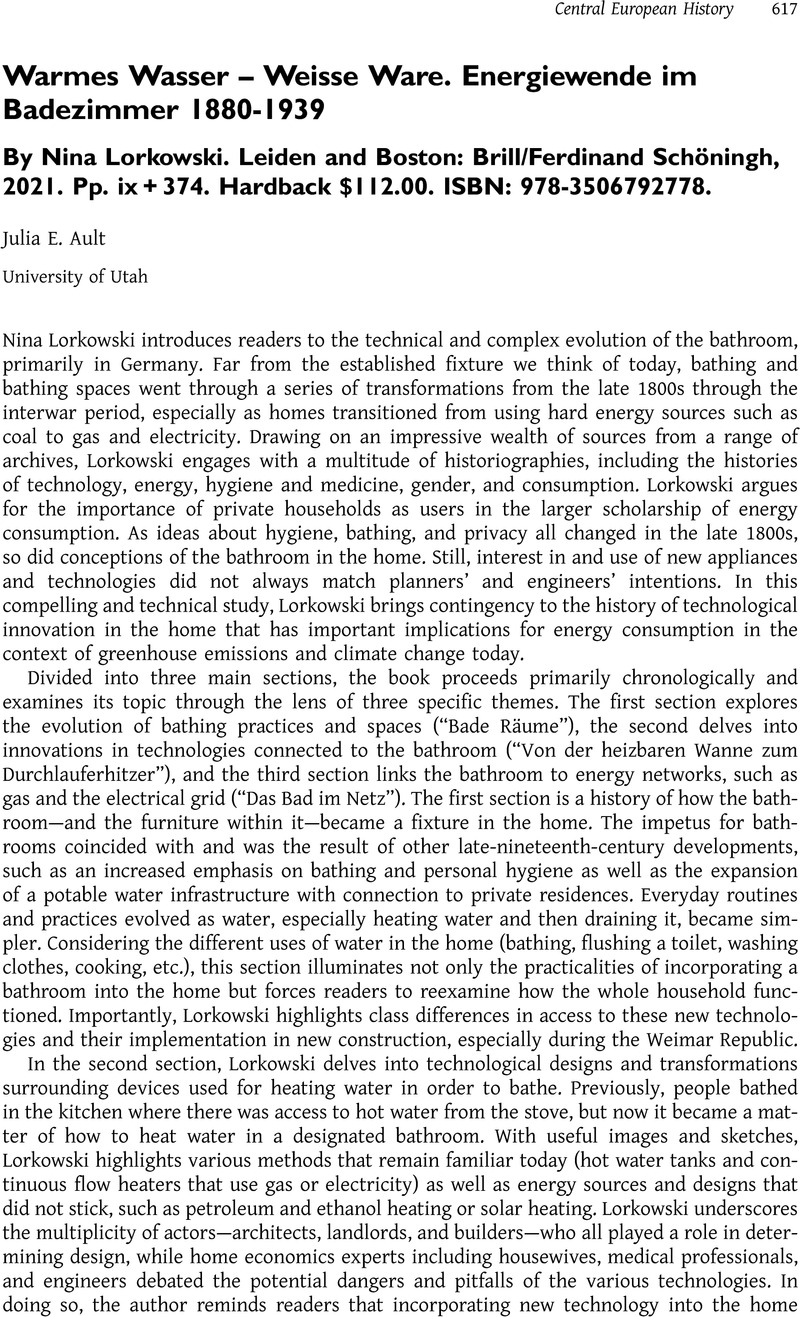No CrossRef data available.
Article contents
Warmes Wasser – Weisse Ware. Energiewende im Badezimmer 1880-1939 By Nina Lorkowski. Leiden and Boston: Brill/Ferdinand Schöningh, 2021. Pp. ix + 374. Hardback $112.00. ISBN: 978-3506792778.
Review products
Warmes Wasser – Weisse Ware. Energiewende im Badezimmer 1880-1939 By Nina Lorkowski. Leiden and Boston: Brill/Ferdinand Schöningh, 2021. Pp. ix + 374. Hardback $112.00. ISBN: 978-3506792778.
Published online by Cambridge University Press: 05 January 2023
Abstract
An abstract is not available for this content so a preview has been provided. Please use the Get access link above for information on how to access this content.

- Type
- Book Review
- Information
- Copyright
- Copyright © The Author(s), 2022. Published by Cambridge University Press on behalf of Central European History Society of the American Historical Association


